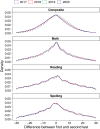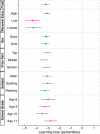Learning loss due to school closures during the COVID-19 pandemic
- PMID: 33827987
- PMCID: PMC8092566
- DOI: 10.1073/pnas.2022376118
Learning loss due to school closures during the COVID-19 pandemic
Abstract
Suspension of face-to-face instruction in schools during the COVID-19 pandemic has led to concerns about consequences for students' learning. So far, data to study this question have been limited. Here we evaluate the effect of school closures on primary school performance using exceptionally rich data from The Netherlands (n ≈ 350,000). We use the fact that national examinations took place before and after lockdown and compare progress during this period to the same period in the 3 previous years. The Netherlands underwent only a relatively short lockdown (8 wk) and features an equitable system of school funding and the world's highest rate of broadband access. Still, our results reveal a learning loss of about 3 percentile points or 0.08 standard deviations. The effect is equivalent to one-fifth of a school year, the same period that schools remained closed. Losses are up to 60% larger among students from less-educated homes, confirming worries about the uneven toll of the pandemic on children and families. Investigating mechanisms, we find that most of the effect reflects the cumulative impact of knowledge learned rather than transitory influences on the day of testing. Results remain robust when balancing on the estimated propensity of treatment and using maximum-entropy weights or with fixed-effects specifications that compare students within the same school and family. The findings imply that students made little or no progress while learning from home and suggest losses even larger in countries with weaker infrastructure or longer school closures.
Keywords: COVID-19; digital divide; learning loss; school closures; social inequality.
Copyright © 2021 the Author(s). Published by PNAS.
Conflict of interest statement
The authors declare no competing interest.
Figures





Comment in
-
Inequality in learning is a major concern after school closures.Proc Natl Acad Sci U S A. 2021 May 18;118(20):e2105243118. doi: 10.1073/pnas.2105243118. Proc Natl Acad Sci U S A. 2021. PMID: 33883271 Free PMC article. No abstract available.
References
-
- United Nations , Education During COVID-19 and Beyond (UN Policy Briefs, 2020).
-
- United Nations , Convention on the Rights of the Child (United Nations, Treaty Series, 1989).
-
- Snape M. D., Viner R. M., COVID-19 in children and young people. Science 370, 286–288 (2020). - PubMed
Publication types
MeSH terms
LinkOut - more resources
Full Text Sources
Other Literature Sources
Medical

